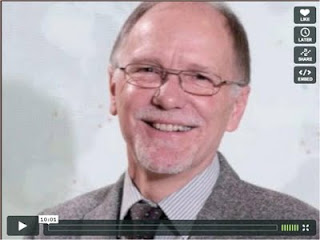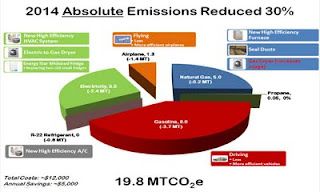The class I co-teach at the Harvard Extension School, ENVR 116: Getting to Carbon Neutrality, just ended and as an extra credit assignment I had students interview professionals about their lessons learned in greenhouse gas planning. The details of the assignment are below. A number of the student interviews were really good and I learned a lot watching them. The first one I watched was Ian Hayes' phone interview (with still image) of Christoph Fuellemann, Environmental Delegate of Swiss International Airlines. He shares a lot of great experience related to trying to quantify and reduce emissions associated with the airline industry, including the contradiction between passengers wanting more space / leg room (fewer passengers per flight) and the desire to reduce emissions per passenger (more passengers per flight). According to Ian:
Mr. Fuellemann shares lessons learned from his experience at Swiss International Airlines, including how environmental advocates can be successful by pursuing opportunities that provide parallel financial and environmental benefits and be willing to make compromises with marketing to balance passenger service goals with emissions reduction targets.

All the interviews can be found here:
http://vimeo.com/groups/envr116
ENVR 116 Extra Credit AssignmentOverview: Conduct, record, and summarize a short interview with somebody who has or may have in the future responsibility for developing a portion of a Climate Action Plan for an organization.
Purpose: Collect and share current best practices and lessons learned in developing Climate Action Plans, allowing others outside of the class as well as future classes to have access to this information.
Requirements: The interview must start with an introduction of the interviewee and a succinct description of their experience or familiarity with Climate Action Planning. The interview needs to include a description of a specific lesson learned or best practice in the field based on the experience of the interviewee. The idea is to identify any potential difficulties in the GHG planning process and hopefully some ways to overcome these difficulties and / or to share success stories of GHG planning processes that were successful. You may want to focus on issues with data collection, funding, staffing, reporting, stakeholder engagement, or any of the other pieces of a GHG reduction plan. Total time of the interview should be between three and five minutes.
 ation of the night from the local students was by Steve O'Flarity, who drove up from Connecticut. Steve set a goal of reducing his household GHG emissions for his 3,000 square foot home by 30% by 2014 from a 2010 baseline. He calculated his family of 4 emitted 28 metric tons of carbon dioxide equivalent in 2010, including most Scope 1 and Scope 2 emissions and the Scope 3 emissions from air travel. He identified a number of GHG mitigation opportunities for his household including driving less, replacing their furnace, and switching from an electric clothes dryer to a new gas dryer (adding to his Scope 1 emissions but reducing his overall emissions). Great job Steve and thanks for letting me share your presentation, though I'll have to wait to attach the file until I can access my FTP site from my home computer.
ation of the night from the local students was by Steve O'Flarity, who drove up from Connecticut. Steve set a goal of reducing his household GHG emissions for his 3,000 square foot home by 30% by 2014 from a 2010 baseline. He calculated his family of 4 emitted 28 metric tons of carbon dioxide equivalent in 2010, including most Scope 1 and Scope 2 emissions and the Scope 3 emissions from air travel. He identified a number of GHG mitigation opportunities for his household including driving less, replacing their furnace, and switching from an electric clothes dryer to a new gas dryer (adding to his Scope 1 emissions but reducing his overall emissions). Great job Steve and thanks for letting me share your presentation, though I'll have to wait to attach the file until I can access my FTP site from my home computer.



